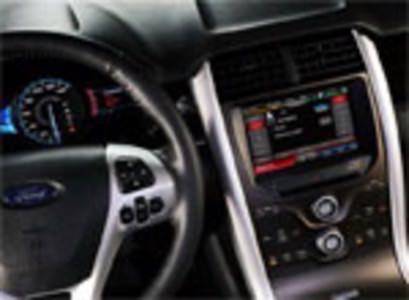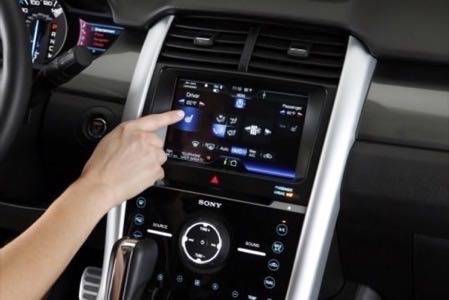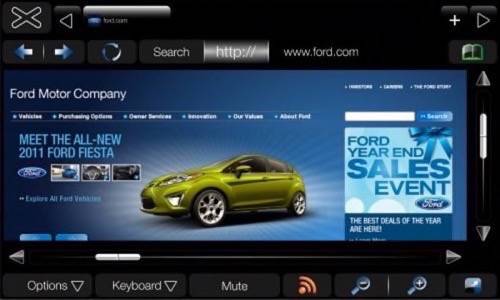In cars, computers have migrated from the engine compartment to the dash. One of the leaders in that movement is Ford. Its MyFord Touch Ford system has meshed an unprecedented number of bells and whistles into the driving environment of the motorist. The first car to be completely outfitted with MyFord Touch, and with Sync SDK, is now taking the air, the 2011 Edge.

The possibilities and possible drawbacks of human-interfaced computing tools in the driving environment are many. To answer a few of them, we spoke with Jim Buczkowski, Henry Ford Technical Fellow and director of electrical and electronic systems research and advanced engineering at Ford.
Sync allows developers to integrate their applications with Ford cars in the MyTouch space. Pandora, Stitcher and OpenBeak have already begun working with the system. With Nuance, the MyFord Touch and Sync systems allow for a host of voice commands to run the car’s computing systems and the allied devices.
The MyFord Touch screens and support computer stores and responds to directions ranging from navigation to temperature preferences to audio.

Who’s your competition? (For the MyFord Touch/SYNC – not competition for Ford in general.)
We are our own competition. Our strategy is to always worry about what’s next, not focus on whether someone is going to catch us. We need to focus on customers and innovation. I worry more about feeding the pipeline with new, great ideas and progressing them through to production than trying to figure out what the competition is doing. We don’t want to be anything other than humble about success but we must be always working on the next big thing.
What’s the coolest thing youâ??re doing? That is, what’s the thing you’ve done, and/or are working on that gives you the biggest thrill?
We don’t talk about future product however, we continue to put great platforms into production that we can continually build upon. That includes Applink which is a platform that enables the creativity and development of automotive specific apps. We also have a lot of connectivity options with SYNC. WiFi, Bluetooth, and USB are great building blocks. You can imagine what might be possible with this platform and the effort is all about finding quick adds that can leverage the platform.
What are Ford cars going to look like in terms of media in a year? Five?
We are approaching seemless, always on connections to the internet. HMI is going to be key. Understanding how people adapt to and adopt technology is a key differentiator.
What do you say to those who object to additional distractions in a car? (Yes, voice – but there is evidence that voice may not be as distracting as texting but it’s still much more lethal than, say, nothing.)
These problems can be solved with technology but we need additional research on the nature of the issue and then we need to apply the appropriate technology solution like voice recognition, etc. I’m not saying we have all the answers right now, but just banning all phones, for instance, won’t be effective as it might make matters worse as consumers try to hide their habit.
People generally use a modest percentage of the functions available on a phone. Do you expect they will act differently with the gear in the new Fords?
We are trying to give people a platform that they can personalize with their own likes. Rather than constrain people to the lowest common denominator, customers can set it to what they like or focus on the things that interest them.
This seems very adventurous, more so for a very established company and for a car company. How did the prime movers of this “ecosystem” overcome what I must presume was some serious inertia?

It’s about being focused on customers. What are our customers buying and what are their changing expectations about what a car should be. That’s why we go to CES and that’s why we are so interested in working with great technology partners. Quality is the price of entry, innovation provides the differentiation. If I have it on my phone or at my house or in the office, why can’t I have it in the car? The prime movers see the light about customers and changing trends. They focus on customers.
Are independent developers developing for the ecosystem? If so, who; if not, plans in the future?
Not yet. We will be rolling out the SDK and APIs by the end of the year to the next round of developers, after working with the initial few for development and beta testing. Our focus is identifying and creating appropriate apps for the driving environment.









